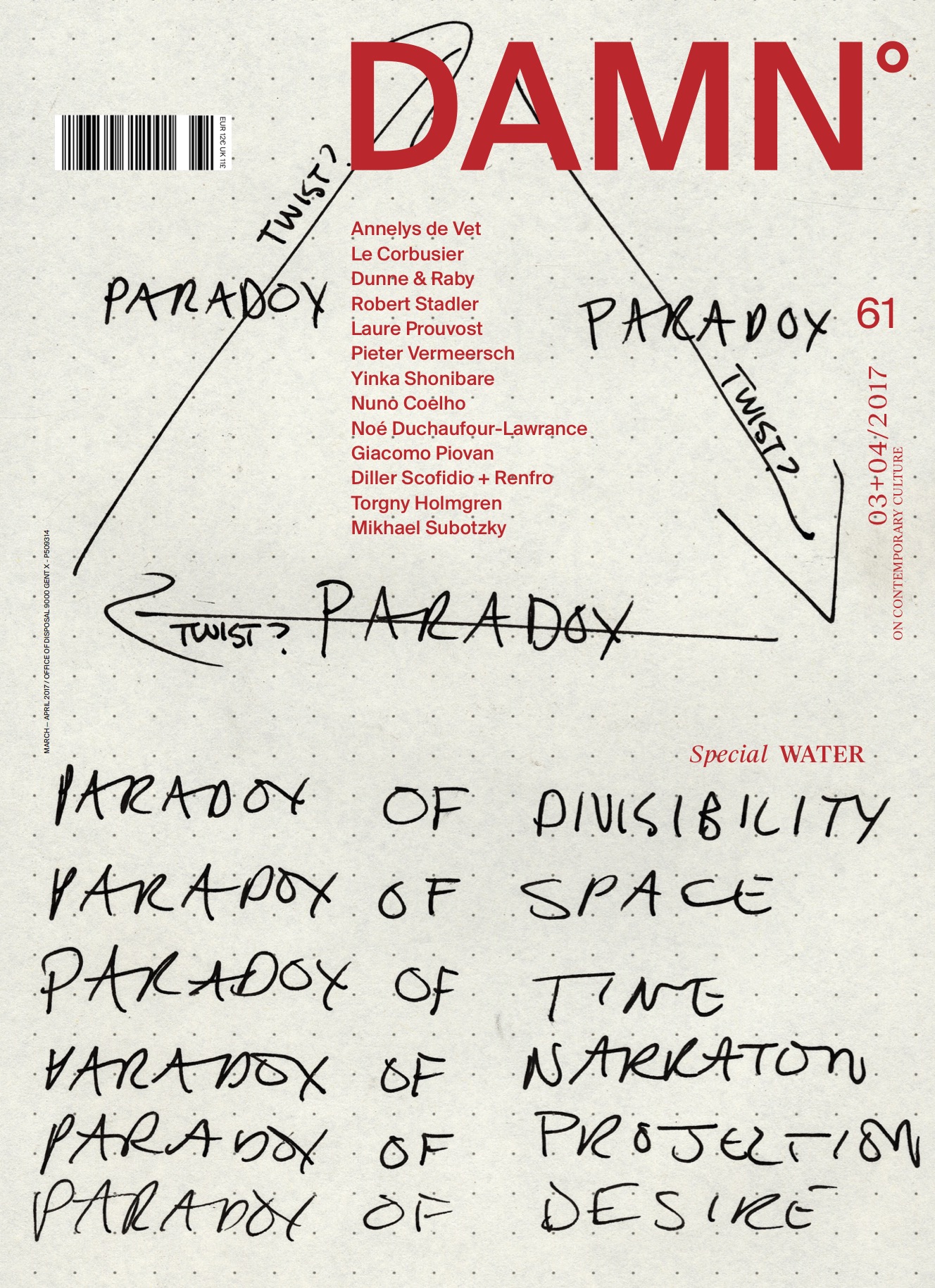Regrettably, the indignation triggered by Trump’s victory and Ivy’s statement did not go so far as to question who the current architects in the US are and which politics they contribute to materialising through their projects — with the exception of the border-wall promised by Trump, which was the object of placards made by architecture students pronouncing We Won’t Build Your Wall! in schools such as Barnard College and Columbia University. It is estimated that 91.3% of practicing architects in the US are white (The Atlantic, 2013) and that 74.9% are white males (LA Times, 2016). As such, one can confidently state that architects do not constitute a profession predominantly composed of persons targeted by the new administration’s policies; on the contrary. This is not to say that an important percentage of architects support these policies, and many may be likely to refuse commissions that would involve increasing the US car-ceral park or any exceptional Guantanamo-like detention camp that this administration may wish to create in future. What it does mean, though, is that architects constitute a population likely not to understand its responsibility in regard to the violence exercised in massively displacing the African-american and Latino residents of gentrified neighbourhoods in New York, San Francisco, and other large cities in the US.
In the obsolete, conservative vision proposed by the AIA, which can be also witnessed in some architecture schools, a new generation of future architects responds with other visions of what their role as an architect might be. As examples of new political approaches to architecture, we introduce the work of six such people: Olivia Ahn, Zulaikha Ayub, Alicia Olushola Ajayi, Melisa Betts, Ylan Vo, and Whitney Hansley. All have graduated in recent years/months from schools in Saint Louis, Boston, and New York; their work as students as well as young professionals demonstrates a vision of architecture diametrically opposed to the ruling conservatism. Such a vision indubitably begins with the architect’s imagination, informed by various encounters that include readings. For this reason, the author asked the six to provide a list of five books that havemost influenced their understanding of society. Although two of them have included books by Peter Eisenman and Bernard Tschumi, traditionally taught in American architecture schools, the other 28 books are definitely outside the standard canon. The few architect-authors cited are also activists (Lori Brown: feminism and reproductive justice; Craig Wilkins: racial equality; Jan Gehl: environmentalism) but this bibliography mainly consists of authors who explicitly have little to do with architecture. Some are poets, others are novelists, but most are historical and contemporary activists who are involved in the African-American struggle, gender fluidity, and self-care, as well as in the fight against racism, the carceral system, and neo-colonialism. Such a select list certainly indicates the politics that might be mobilised through their work, as attested to by their thesis projects at school.
 PROJECTS
PROJECTS
Olivia Ahn worked on the relationship between the American suburban house and the post-WWII (re)fabrication of the female gender; Zulaikha Ayub researched the territorial dimensions of the Manhattan Project in the elaboration of the atomic bomb; Alicia Olushola Ajayi’s project addressed the contemporary state of an 18th-century African-American settlement in Illinois; Melisa Betts designed an architecture school that had turned entirely to collaborations with local activist and community associations; Ylan Vo’s precision research tackled the massive use of the toxic Agent Orange by the US military in Vietnam; and Whitney Hansley’s work was dedicated to drastically re-thinking the highly unhealthy public housing in the Bay Area that has significantly reduced the life expectancy of its pre-dominantly African-American residents.
 These recent graduates currently divide their lives between professional activity (in an architecture office, in the case of three of them; in the field of research, for two others; and as a doula in a carceral environment, for one) and their personal work, including activist activity. The period in which they have emerged in the architectural field is very particular, as none of the designs they contribute to or undertake themselves could possibly be politically neutral. Ignoring such an impossibility would only serve the dangerous political programmes designed by the federal government and its local avatars, while the degree of engagement that these architects of the future (and many others) demonstrate allows the possibility of an architectural opposition to such programmes.
These recent graduates currently divide their lives between professional activity (in an architecture office, in the case of three of them; in the field of research, for two others; and as a doula in a carceral environment, for one) and their personal work, including activist activity. The period in which they have emerged in the architectural field is very particular, as none of the designs they contribute to or undertake themselves could possibly be politically neutral. Ignoring such an impossibility would only serve the dangerous political programmes designed by the federal government and its local avatars, while the degree of engagement that these architects of the future (and many others) demonstrate allows the possibility of an architectural opposition to such programmes.


In the obsolete, conservative vision proposed by the AIA, which can be also witnessed in some architecture schools, a new generation of future architects responds with other visions of what their role as an architect might be. As examples of new political approaches to architecture, we introduce the work of six such people: Olivia Ahn, Zulaikha Ayub, Alicia Olushola Ajayi, Melisa Betts, Ylan Vo, and Whitney Hansley. All have graduated in recent years/months from schools in Saint Louis, Boston, and New York; their work as students as well as young professionals demonstrates a vision of architecture diametrically opposed to the ruling conservatism. Such a vision indubitably begins with the architect’s imagination, informed by various encounters that include readings. For this reason, the author asked the six to provide a list of five books that havemost influenced their understanding of society. Although two of them have included books by Peter Eisenman and Bernard Tschumi, traditionally taught in American architecture schools, the other 28 books are definitely outside the standard canon. The few architect-authors cited are also activists (Lori Brown: feminism and reproductive justice; Craig Wilkins: racial equality; Jan Gehl: environmentalism) but this bibliography mainly consists of authors who explicitly have little to do with architecture. Some are poets, others are novelists, but most are historical and contemporary activists who are involved in the African-American struggle, gender fluidity, and self-care, as well as in the fight against racism, the carceral system, and neo-colonialism. Such a select list certainly indicates the politics that might be mobilised through their work, as attested to by their thesis projects at school.

Whitney Hansley, Farms, Forks, and the METS in between
Olivia Ahn worked on the relationship between the American suburban house and the post-WWII (re)fabrication of the female gender; Zulaikha Ayub researched the territorial dimensions of the Manhattan Project in the elaboration of the atomic bomb; Alicia Olushola Ajayi’s project addressed the contemporary state of an 18th-century African-American settlement in Illinois; Melisa Betts designed an architecture school that had turned entirely to collaborations with local activist and community associations; Ylan Vo’s precision research tackled the massive use of the toxic Agent Orange by the US military in Vietnam; and Whitney Hansley’s work was dedicated to drastically re-thinking the highly unhealthy public housing in the Bay Area that has significantly reduced the life expectancy of its pre-dominantly African-American residents.

Ylan Vo, A LUOI – MAPPING, The Vietnam War served as an operational testing ground for the security doctrine centered on the preoccupation of identifying insurgents in incomprehensible territory. The Ho Chi Minh trail was the site of confli between a tactical militarised ecology employed by guerrillas operating in dense forests for cover, and the high-tech operations Trail Dust and Ranch Hand launched by the US to defoliate those lands. The location of A Luoi Valley, not far south of the 17th parallel (DMZ) and just we of the historic city of Hue, at the VN-Laos border, presented rategic significance and made the valley an incidental hotspot at the intersection of these conflicting forces. It is clear from the US military’s own analysis that the particular topography and vegetation of the A Luoi Valley both impacted and has been impacted by the conflict that occurred there.

Olivia Ahn, This drawing indexes all of the items granted to the pregnant women that Olivia Ahn currently supports, upon their incarceration in Jail X: a metal frame bed to be positioned in a dorm that contains up to 50 people, a plastic-covered mattress, a felt blanket, one pillow, a large 18-gallon Tupperware container in which to place commissary items sent from those on the outside, and a plastic bucket for other personal belongings.

Alicia Olushola Ajayi, TOWERSCAPE / A speculative residential project that blurs the lines between public and private life
 Melisa Betts, HOMELESS SETTLEMENT TIMELINE, Locations of informal homeless settlements along the St Louis, Missouri riverfront over time Urban Design Studio
Melisa Betts, HOMELESS SETTLEMENT TIMELINE, Locations of informal homeless settlements along the St Louis, Missouri riverfront over time Urban Design Studio



